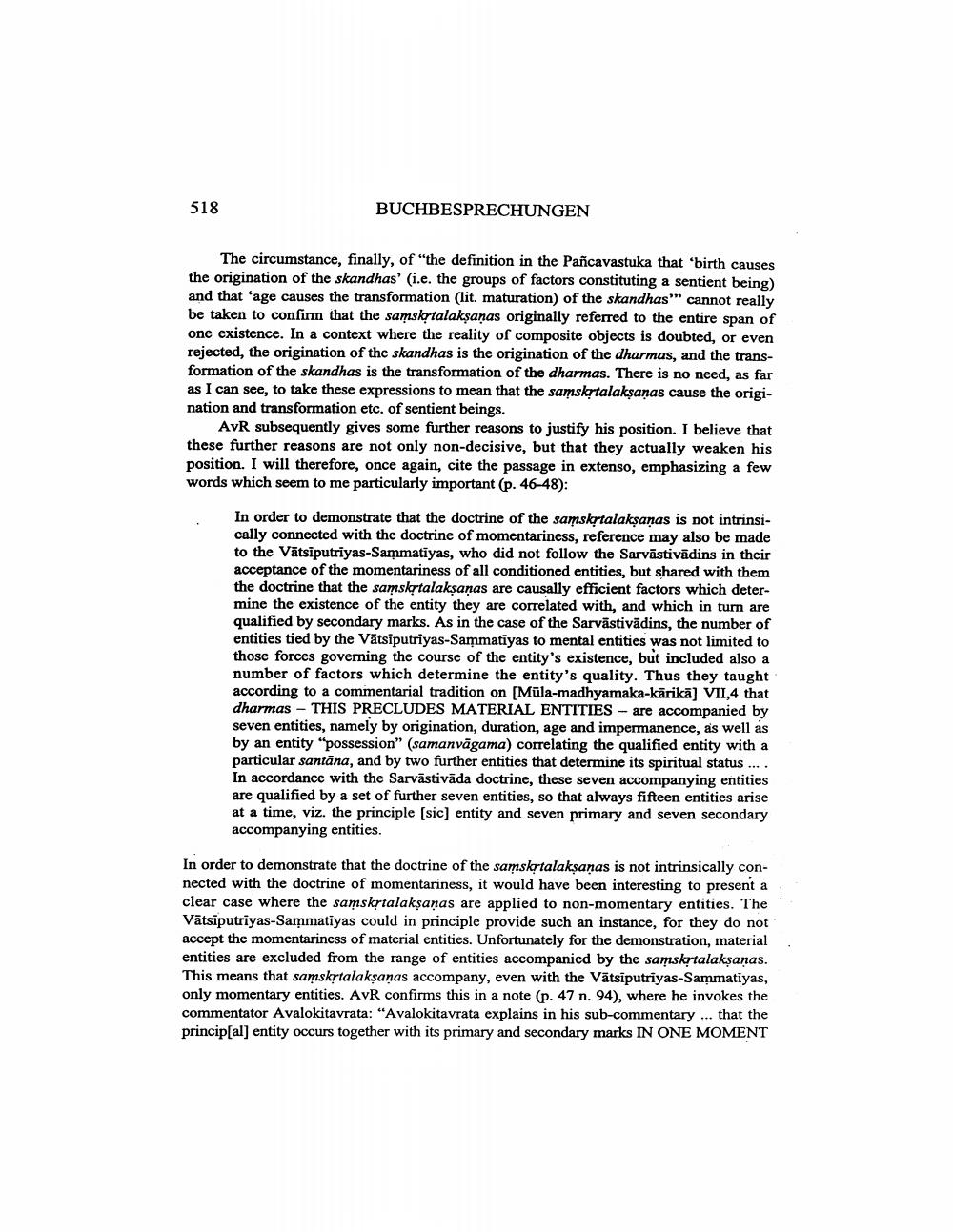Book Title: Buchbesprechungen Comptes Rendus Book Reviews Author(s): Peter Schreiner Publisher: Peter Schreiner View full book textPage 6
________________ 518 BUCHBESPRECHUNGEN The circumstance, finally, of "the definition in the Pancavastuka that 'birth causes the origination of the skandhas' (i.e. the groups of factors constituting a sentient being) and that age causes the transformation (lit. maturation) of the skandhast" cannot really be taken to confirm that the samskytalaksanas originally referred to the entire span of one existence. In a context where the reality of composite objects is doubted, or even rejected, the origination of the skandhas is the origination of the dharmas, and the transformation of the skandhas is the transformation of the dharmas. There is no need, as far as I can see, to take these expressions to mean that the samskıtalaksanas cause the origination and transformation etc. of sentient beings. AVR subsequently gives some further reasons to justify his position. I believe that these further reasons are not only non-decisive, but that they actually weaken his position. I will therefore, once again, cite the passage in extenso, emphasizing a few words which seem to me particularly important (p. 46-48): In order to demonstrate that the doctrine of the samskytalaksanas is not intrinsically connected with the doctrine of momentariness, reference may also be made to the Vātsiputriyas-Sammatiyas, who did not follow the Sarvāstivādins in their acceptance of the momentariness of all conditioned entities, but shared with them the doctrine that the samsktalakşaņas are causally efficient factors which determine the existence of the entity they are correlated with, and which in turn are qualified by secondary marks. As in the case of the Sarvāstivādins, the number of entities tied by the Vätsiputriyas-Sammatiyas to mental entities was not limited to those forces governing the course of the entity's existence, but included also a number of factors which determine the entity's quality. Thus they taught according to a commentarial tradition on [Mula-madhyamaka-kārikā] VII,4 that dharmas - THIS PRECLUDES MATERIAL ENTITIES - are accompanied by seven entities, namely by origination, duration, age and impermanence, as well as by an entity "possession" (samanvāgama) correlating the qualified entity with a particular santāna, and by two further entities that determine its spiritual status .... In accordance with the Sarvāstivāda doctrine, these seven accompanying entities are qualified by a set of further seven entities, so that always fifteen entities arise at a time, viz. the principle [sic] entity and seven primary and seven secondary accompanying entities. In order to demonstrate that the doctrine of the samskytalaksanas is not intrinsically connected with the doctrine of momentariness, it would have been interesting to present a clear case where the samsktalaksanas are applied to non-momentary entities. The Vätsiputriyas-Sammatiyas could in principle provide such an instance, for they do not accept the momentariness of material entities. Unfortunately for the demonstration, material entities are excluded from the range of entities accompanied by the samskytalaksanas. This means that samskytalaksanas accompany, even with the Vätsiputriyas-Sammatiyas, only momentary entities. AVR confirms this in a note (p. 47 n. 94), where he invokes the commentator Avalokitavrata: "Avalokitavrata explains in his sub-commentary ... that the princip[al] entity occurs together with its primary and secondary marks IN ONE MOMENTPage Navigation
1 ... 4 5 6 7 8
